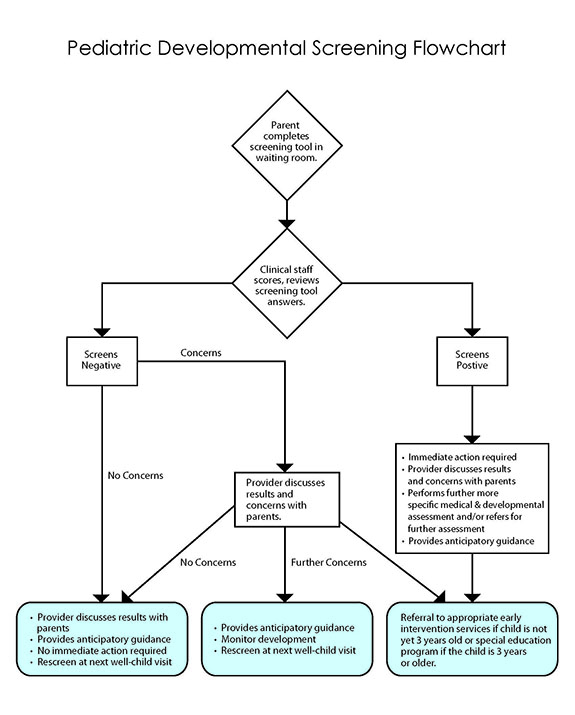Early Detection of Autism Spectrum Disorder
Having a new baby can bring lots of joy and excitement. Despite the sleepless nights and diaper blowouts, there is a lot to delight in, such as watching your baby smile for the first time or listening to their belly laugh.
However, as you see your child grow each day, you might have some concerns about their development. Something that comes up quite often for parents is their concern with neurodivergence, particularly autism spectrum disorder (ASD). As this diagnosis becomes more prevalent, worries about your child can surface. Looking for early signs of autism in babies can help ease those worries and prepare you to support your child as they grow.
The Centers for Disease Control and Prevention (CDC) state that 1 in 36 children is diagnosed with autism; because of this it is a good idea to be aware of your infant’s developmental stages so you can be aware of your baby’s growth. It’s also good to learn about what early detection and other services are available. Information is your best tool and asset in helping your child have a bright and happy future.
The best way to be ready
If you want to be prepared, then you should arm yourself with knowledge. Along with your pediatrician’s guidance, many websites are helpful with this information. The CDC’s “Learn the Signs Act Early Program” has lots of information including printable checklists for general developmental milestones. You can also download the CDC’s free Milestone tracker app. It is quick and easy to use. It also includes pictures and videos so you will know exactly what milestones your child should be reaching.
What to look for
So now you must be curious about what exactly you should look for. Autism is a spectrum disorder, which means that a person can have a range of symptoms from mild to more serious. Identifying early signs of autism in babies and young children usually involves careful monitoring of the child’s developmental milestones.
The American Academy of Pediatrics (APP) recommends getting screening for all development delays at well-child visits and 9, 18, and 30 months. At 18 months the APP recommends starting ASD-specific screening. The ASD specific high risk factors that are investigated by pediatricians are:
- Preterm birth
- Autism being present in a family member
- Low birth weight
If there are concerns your pediatrician may want to do further medical, and developmental evaluations which could lead to the diagnostic process.
Some signs are considered general symptoms that parents and doctors can look for in toddlers 12-18 months according to The National Institute of Child Health and Development (NIH).
- No response to his or her name
- Problems following another person’s gaze or pointed finger to an object (or “joint attention”)
- Poor skills in pretend play and imitation
- Problems with nonverbal communication
- Problems with eye contact
It is common for parents to miss these symptoms until their child fails to start talking at the typical age. But if you are observant, you may be able to catch early autism signs.
Parents are on the front lines for early signs of autism in babies
Studies show that observant parents may notice early signs of autism in babies much sooner than the formal screening. According to a study done in 2019, 41.9% of children with ASD had symptoms that were noticed as young as 7 months old. Even more recent studies show that parents can look for signs as early as four months.
After all, according to the CDC, parents are often the first to recognize a developmental delay. In addition their concerns are 78-80% accurate in identifying the disability. Parents are on the front lines of noticing what their child needs and pinpointing the diagnosis.
Although symptoms are often hard to notice in a developing baby, just as it is with toddlers, language development is a big indicator. Research suggests that a developmental delay could manifest in a baby as young as four months. In younger babies the developmental delays that can be indicators of autism can look like this:
- At 2 months of age, caregivers notice reduced facial expressions or the infant is not following movement with their eyes.
- At 4 months of age, a baby is not making babbling and cooing sounds.
- At 6 months of age, the baby is not responding to their name yet.
- At 9 months the baby is not yet pointing to objects.
You can learn about and check these milestones and more on the CDC site and app. Many of the milestones are easy to notice as you regularly interact with your child.
Meeting milestones and then regressing
According to PsychCentral, regression of skills is also an early sign of autism. This can manifest when your child’s regularly babbling to caregivers decreases significantly over time. Another behavior to look for is a noticeable reduction in facial expressions such as smiling. Another example is when a child who previously maintained regular eye contact starts showing reluctance to do so, over time. These symptoms might not mean your child has ASD but it is important to discuss them with your doctor.
Why is early detection and intervention important?
The sooner you can pinpoint your child’s early autism signs and confirm your child’s diagnosis, the faster you can seek support for yourself and your child. If therapy is started early children with ASD, they have less chance of language delay or a better chance of improving it. As your child’s brain develops, early support can help your young child’s development in areas such as communication, motor skills, and social interaction.
According to a 2017 study by NIH, early intervention is imperative for the child, particularly before the age of 4, to start treatment. Early detection and intervention can impact the long-term quality of life for children with ASD.
Possible interventions can include nutritional help, speech therapy, occupational therapy, hearing impairment services, and family training. As your child enters school age, they may qualify for classroom services as well. These interventions can have a hand in reducing frustration with communication and future behavioral challenges.
Next Steps
If your child is 3 years old or older, contact your local public school system.
Even if your child is not yet old enough for kindergarten or enrolled in a public school, call your local elementary school or board of education and ask to speak with someone who can help you have your child evaluated.
- If you’re not sure whom to contact, call the ECTA at 919-962-2001.
- Or visit the ECTA website.
Many parents with concerns ask their doctors to refer them to a specialist to get a more comprehensive evaluation. Each state also has free, public early childhood systems which can provide evaluations for autism with or without a doctor’s referral.
In order to determine the correct contact information for your child’s age, the CDC gives the following information:
If your child is not yet 3 years old, contact your local early intervention system.
- You can find the right contact information for your state by calling the Early Childhood Technical Assistance Center (ECTA) at 919-962-2001.
- Or visit the ECTA website.
Conclusion
As a parent of a child with ASD, I can assure you that if you see any sign of developmental delay, information is your greatest asset. Autism exists on a spectrum, and no matter where your child is on that scale, there will be moments of delight. As the CDC says, “Learn the signs and act early!” Looking for early signs of autism in babies and finding support for you and your child will help you navigate the situation and bring peace of mind.
Also, it helps to view information as a helpful tool, not a burden that creates anxiety and keeps you from enjoying time with your child. Try not to be so worried about your child’s development that you lose the ability to enjoy each stage. Arm yourself with the knowledge of what to look for and what to do if you notice some developmental concerns, but as you do, please also look for joyful things as well! All the Best!
Eileen Lamb
BS in Special Education, freelance writer, VCFA MFA in Creative Writing candidate
Owner and COO of Code Ninjas, Windermere, FL

“Data & Statistics on Autism Spectrum Disorder.” Centers for Disease Control and Prevention, 2 Mar. 2022, https://www.cdc.gov/ncbddd/autism/data.html.
“CDC Developmental Milestones.” Centers for Disease Control and Prevention, 29 Dec. 2022, www.cdc.gov/ncbddd/actearly/milestones/index.html. Accessed 15 Mar. 2023.
“ “Learn the Signs. Act Early.” ” Centers for Disease Control and Prevention, Centers for Disease Control and Prevention, 19 Sept. 2022, https://www.cdc.gov/ncbddd/actearly/index.html.
Hyman, Susan L., et al. “Identification, Evaluation, and Management of Children With Autism Spectrum Disorder.” Publications.aap.org, Jan. 2020, https://publications.aap.org/pediatrics/article/145/1/e20193447/36917/Identification-Evaluation-and-Management-of.
Drake, Kimberly. “6 Signs of Autism in Infants and Babies.” Psych Central, Psych Central, 21 Dec. 2021, https://psychcentral.com/autism/signs-of-autism-in-infants#advantages-of-early-diagnosis.
Hobbs, Katherine G. “Signs of Autism in Infants and Children – Ultimate Guide.” Autism Parenting Magazine, 15 Oct. 2022, https://www.autismparentingmagazine.com/signs-of-autism-children/.
“When Do Children Usually Show Symptoms of Autism?” Eunice Kennedy Shriver National Institute of Child Health and Human Development, U.S. Department of Health and Human Services, 21 Jan. 2017, https://www.nichd.nih.gov/health/topics/autism/conditioninfo/symptoms-appear#f1.
Parmeggiani A, et al. (2019). Early features of autism spectrum disorder: A cross-sectional study.
ijponline.biomedcentral.com/articles/10.1186/s13052-019-0733-8
“What Is Autism Spectrum Disorder?” Centers for Disease Control and Prevention, Centers for Disease Control and Prevention, 9 Dec. 2022, https://www.cdc.gov/ncbddd/autism/facts.html.
Elder, Jennifer Harrison, et al. “Clinical Impact of Early Diagnosis of Autism on the Prognosis and Parent-Child Relationships.” Psychology Research and Behavior Management, U.S. National Library of Medicine, 24 Aug. 2017, https://www.ncbi.nlm.nih.gov/pmc/articles/PMC5576710/.
“What Is Autism Spectrum Disorder?” Centers for Disease Control and Prevention, Centers for Disease Control and Prevention, 9 Dec. 2022, https://www.cdc.gov/ncbddd/autism/facts.html.
Diagnostic and Statistical Manual of Mental Disorders, 5th Edition. (2013). American Psychiatric Association: Washington, DC.
Elder, Jennifer, et al. “Clinical Impact of Early Diagnosis of Autism on the Prognosis and Parent–Child Relationships.” Psychology Research and Behavior Management, vol. 10, 2016, pp. 283-292, https://doi.org/10.2147/PRBM.S117499. Accessed 14 Mar. 2023.
“What Is Autism Spectrum Disorder?” Centers for Disease Control and Prevention, Centers for Disease Control and Prevention, 9 Dec. 2022, https://www.cdc.gov/ncbddd/autism/facts.html.
If you found this article helpful, check out this article on breastfeeding and heart health!
Eileen Lamb
BS in Special Education, freelance writer, VCFA MFA in Creative Writing candidate Owner and COO of Code Ninjas, Windermere, FL










